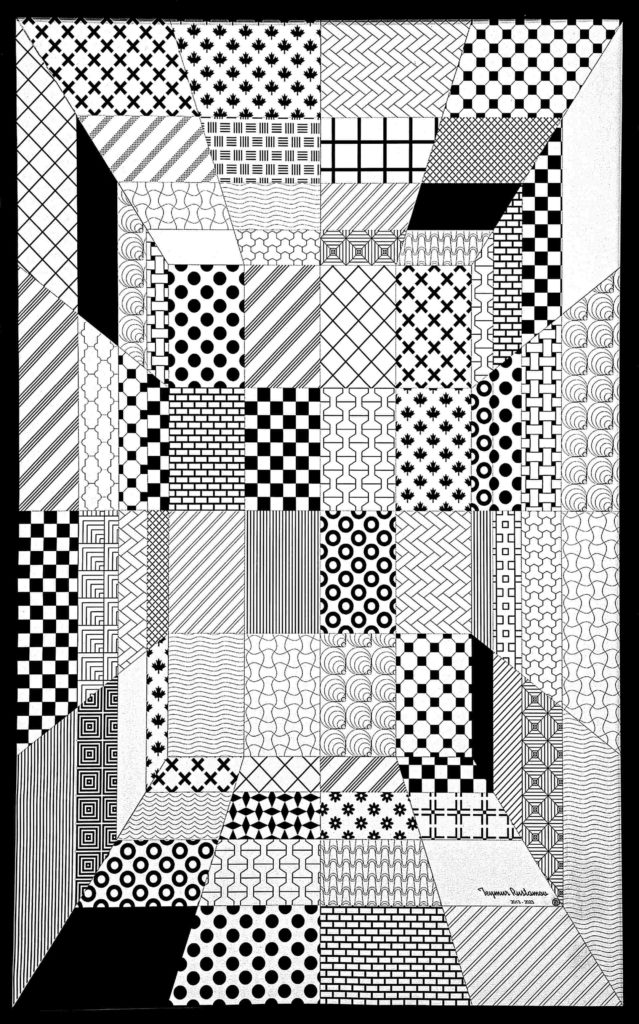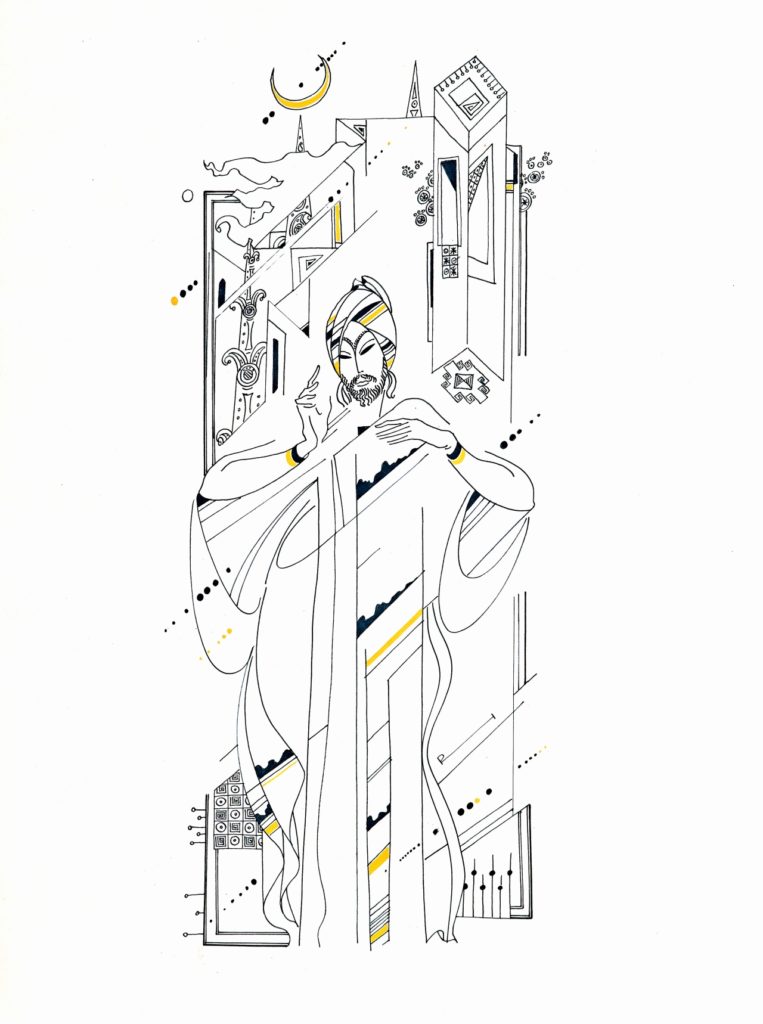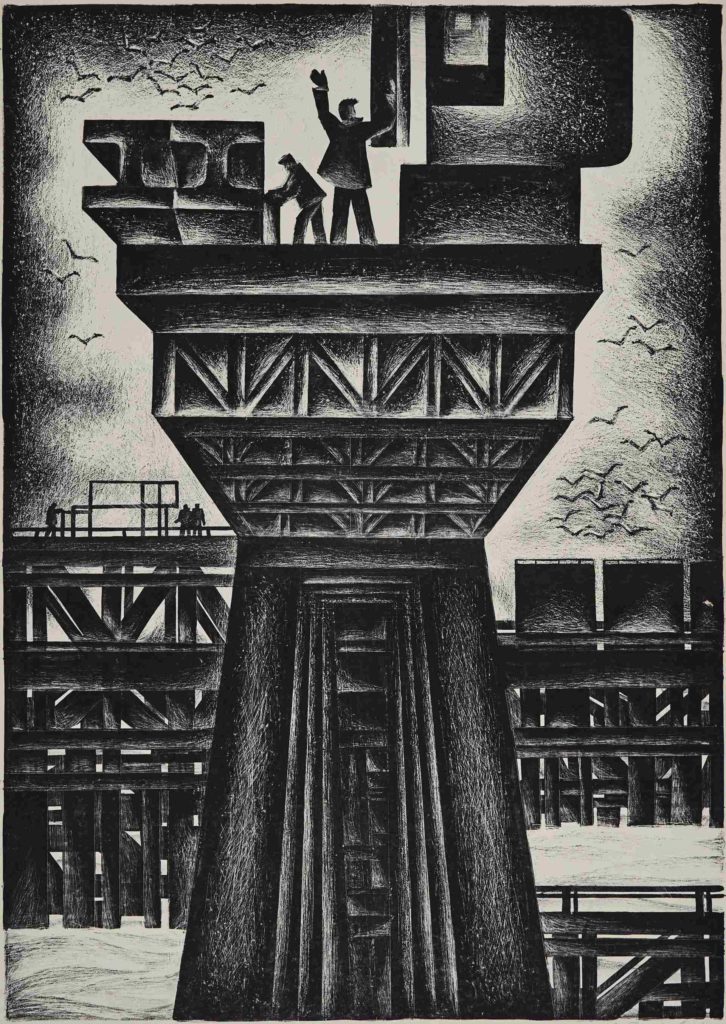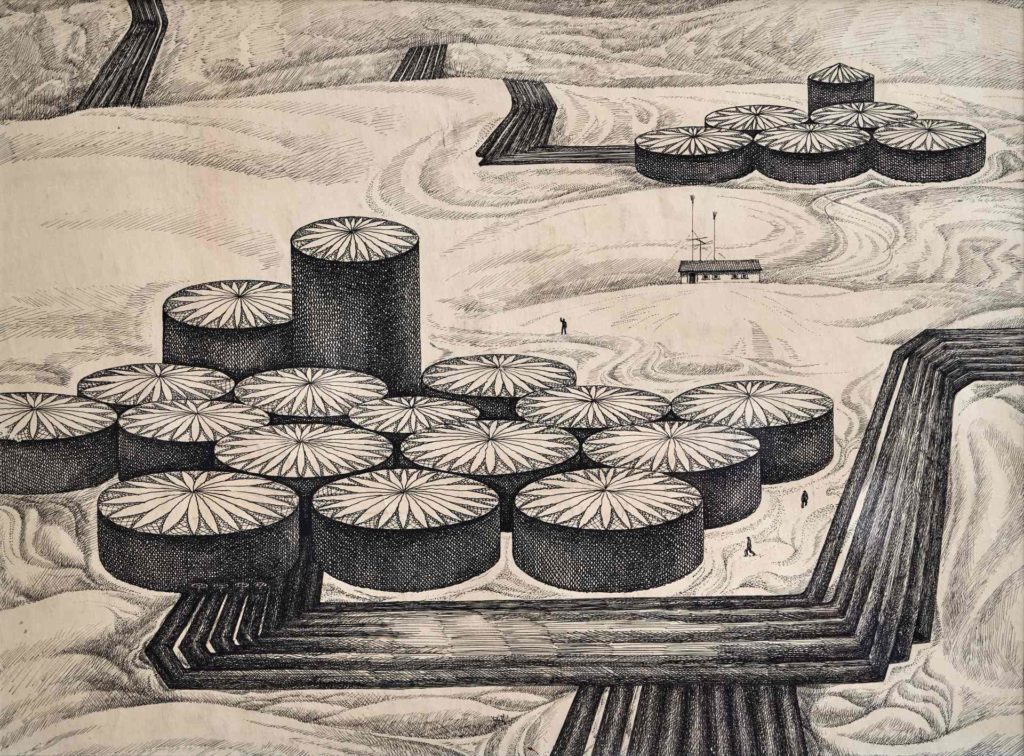The development path of the Azerbaijani graphics is ambiguous. One can say that the very emergence of the Azerbaijani professional art school is connected, first of all, with the development of graphics, in particular such types as a political poster and a satirical drawing. It was in this area that the founder of the art school of Azerbaijan, Azim Azimzade worked. In his youth he collaborated with the satirical magazine “Molla Nasreddin”, that had been published in Tiflis under the editorship of the Azerbaijani writer-enlightener Jalil Mammadguluzade since 1906. A. Azimzade was known as an author of book illustrations, the satirical drawings, sketches of costumes and theater sets, the political cartoons and posters.
Despite its genetics, associated with an acute social and political orientation, pretty soon the Azerbaijani graphics development entered the channel of a purely artistic phenomenon, that reflected general artistic trends and closely intersected with other kinds of fine arts such as painting, sculpture, theatrical and decorative art.
As in any other national art school of the past and the present, there was a clear division between the artists into painters, sculptors and graphic artists in Azerbaijan art. However, from the very first steps of existence of the professional art school, one can observe the numerous intersections of these “narrow specializations”. Perhaps, any outstanding Azerbaijani painter is widely known for his graphic works, and a graphic artist – for paintings or brilliant work in the theater.
Along with easel graphics, a significant layer in Azerbaijani art is a book illustration. Azerbaijani folk tales and epics (“Kitabi Dede Gorgud”, “Koroglu”) are illuminated. Also, the works of Russian and European classics and the heritage of Eastern poetry of various periods are published. An enormous place in the works of graphic artists belongs to the design of books by contemporary Azerbaijani writers and poets. Here, it would be especially desirable to note the creativity of Arif Huseynov, in whose track record there are numerous cycles of illustrations for the works by Nasimi, M.A.Sabir, Rasul Rza, Anar, Nabi Khazri, and for the Azerbaijani folk tales.
Sattar Bahlulzade, Taghi Taghiyev, Khalida Safarova, Rasim Babayev, Tahir Salahov, Toghrul Narimanbeyov, Farhad Khalilov, Kamal Ahmadov… Each of them, being an outstanding painter, is also known for a large number of graphic works – pencil drawings, watercolors, pastels, linocuts, etc., that rightfully occupy an honorable place in the Azerbaijan graphics of the modern period. These can be preliminary drawings, that are already made at the highest artistic level. These can also be portraits, landscapes, sketches of street or everyday scenes – in a word, everything that surrounded the artists in their daily life.
The largest phenomenon in the history of Azerbaijani graphics of the Soviet period is the activity of Maral Rahmanzade, who is known primarily for her numerous series devoted to the life in Oil Rocks. By the way, Maral khanum was one of the first Azerbaijani artists who not only had been going to the Oil Rocks from the very first years of their operating, but also lived there for months, sharing the challenges of everyday life on the high seas along with oil workers. This is a theme that the artist was addressing throughout her long creative life, and every time it received a new sound. Not the last role was played here by the variety of techniques that the artist applied.
A striking episode in the Azerbaijani graphics of the 1960s were the works of Alakbar Rzaguliyev, who in his linocuts recreated the genuine encyclopedia of Azerbaijani life of the past.
Also, a significant event in the artistic life of Azerbaijan in the 1980s was the discussion of ways of development of the art of miniature. The main ideologist here was Elchin Aslanov, who was well known not only for his avantgarde views, but also for his deeply researched theoretical works on various types of Azerbaijani traditional art. His research included the activity of the Tabriz School of Miniature and creativity of its leader Soltan Muhammed. In disputes over what a modern Azerbaijani miniature should be, Elchin Aslanov insisted on a creative interpretation of the traditions of the Tabriz School. In other words, he applied the organic introduction of them into the structure of the modern form, taking into account the color and compositional features of the traditional Eastern miniature, as well as the dynamic character of its individual elements and interrelationship of spaces.
Another option for reviving the very idea of the medieval Oriental miniature is a sophisticated stylization of forms, bringing them closer to the nature of ornament. Vivid examples of such an interpretation of the Eastern traditions are the compositions of Sanan Kurbanov and Rasim Nazirov. The transparent, masterly created improvisations with China ink and pen in these works resemble an intricate ligature of the Mugham melody and the flowery-refined style of Oriental poetry. Trying to revive the forgotten and preserve what was found, the artists thus combined the traditional ornamental motifs and stylistic features of the Azerbaijani classical miniature with the characteristic, emphasized the modern methods of artistic expression in their works.
An interesting topic in the history of modern Azerbaijani graphics is the development of art of poster. As it is known, of all the kinds of graphics, the poster is most closely associated with the political and social life of the country. In this sense, the Azerbaijani poster is no exception. However, a very special place among the Azerbaijani poster artists is Elmira Shahtakhtinskaya, who has worked in this genre for over 40 years. In addition to laconicism of the language and the acute character of the content, the posters of this artist are distinguished by lyricism and melodious lines, a special aesthetic expressiveness. The theme of Azerbaijani cultural heritage is of predominant importance among the posters of E. Shahtakhinskaya. Her posters dedicated to the memory of prominent Azerbaijani poets and artists of the past represent not only public and historical value, but, marked by their original artistic quality and the artist’s special “pictorial” style, are also the unique pages of the Azerbaijani art of the 20th century.
It is in this direction – the increasing the artistic quality and artistry of the poster language, as well as the saturating the works with philosophical and cultural topics – the young Azerbaijani poster artists are working today.
Thus, the range of themes and images in the work of graphic artists has been and remains very diverse to this day, reflecting, in unison with painting, the current ideas of its time. Practicing a variety of techniques, the graphic artists address global life issues, giving them a philosophical tonality.
Summing up the discourse on Azerbaijani fine arts of the 20–21st centuries, one should note the following: the existence of a person in the context of his/her traditions and his/her natural environment, the microcosm, and understanding oneself within a dialogue of cultures, the crossing of West and East, that are equally familiar and close to Azerbaijani artists – all these make up the axis that the masters of different generations and creative preferences followed. Here are those who work in traditional forms (painting, graphics, sculpture, ceramics and glass), and those who consistently introduce themselves into the intricate and diverse texture of conceptual art.
All the above mentioned is vividly affirmed by the works stored in the funds of the Azerbaijan State Art Gallery, the most striking examples of which are represented in this portal.



